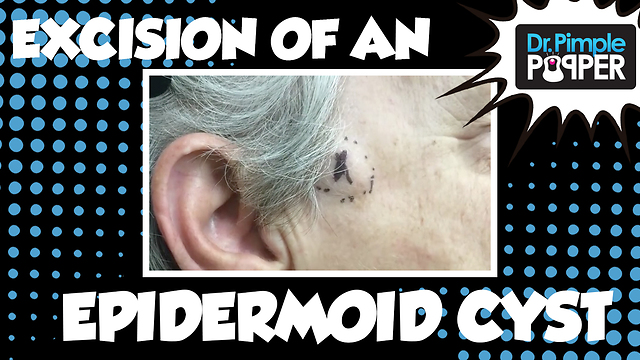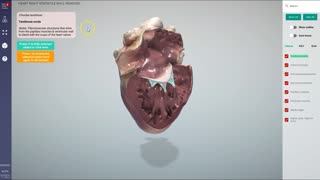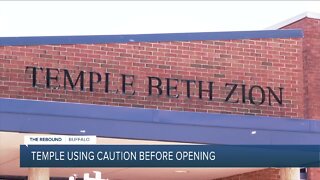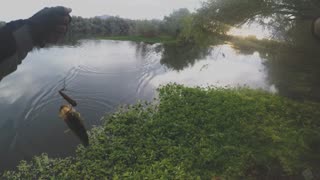Premium Only Content

Dr. Pimple Popper: Cyst Removed on the Right Temple
This is a very sweet, longstanding patient of mine who was very nervous about having this bump excised. Which is why she had lived with it for quite awhile. Although she has excellent local anesthesia, I know that she is still nervous and can actually HEAR what I'm doing and oftentimes with patients this can cause anxiety in itself. So, I talk to her during the procedure, speaking about nothing in particular, but I do this to help distract the patient from thinking about what I am doing, and so she is more likely not to hear the snipping and cutting sounds on her temple, right next to her ear.
An epidermoid cyst (Epidermal Inclusion cyst, Infundibular cyst), is a benign growth commonly found in the skin and typically appears on the face, neck or trunk, but can occur anywhere on the body. Another name used is “sebacous cyst” but this is actually an antiquated misnomer, and is not a term used by dermatologists. They are also the most common type of cutaneous cysts. Epidermoid cysts result from the reproduction of epidermal cells within a confined space of the dermis. The pasty contents are mostly composed of macerated keratin (wet skin cells), which creates this “cheesy” consistency, and there can be a pungent odor. An epidermoid cyst may have no symptoms and are typically harmless. Usually people seek removal but they don’t like the appearance of these bumps, or the cyst has ruptured or been inflamed or “infected” in the past. Rupture is associated with sudden redness, pan, swelling, and local heat, and can lead to abscess formation. Also, a history of inflammation, often increases scar tissue in the area, makes the cyst more firmly adherent to surrounding skin, and makes it more difficult to remove. Surgical excision is curative, but the complete cyst removal including the entire cyst sac and contents need to be removed to ensure that the cyst won’t reoccur.
-
 0:33
0:33
WochitNow
5 years agoDr. Pimple Popper Sent Kim Kardashian Cortisone+ Cream
660 -
 0:31
0:31
IVALA® - 3D Veterinary Anatomy - Promo
4 years ago $0.02 earnedCanine heart right ventricle removed - 3D Veterinary Anatomy & Learning IVALA
11.2K -
 2:40
2:40
WKBW
5 years agoTemple Beth Zion looking to get reopening right
16 -
 0:36
0:36
WochitNow
5 years agoKim Kardashian "Obsessed" With Dr. Pimple Popper
513 -
 0:47
0:47
gstix
4 years agoPopper fishing!!
121 -
 37:33
37:33
True Christianity Catholic & Apostolic
4 years agoThe THIRD Temple - HEROD's Temple
4943 -
 17:13
17:13
Author Lauri Matisse - Mystikcenter
4 years ago $0.09 earned3rd TEMPLE?
460 -
 0:19
0:19
EntertainmentVideos
4 years agoAsia Temple *
1.8K -
 1:07
1:07
Brett Jones Percussion
4 years ago $0.01 earnedTemple Block Tutorial
54 -
 1:26
1:26
JimmysMooies
4 years ago $0.08 earnedShirley Temple Dolls
937